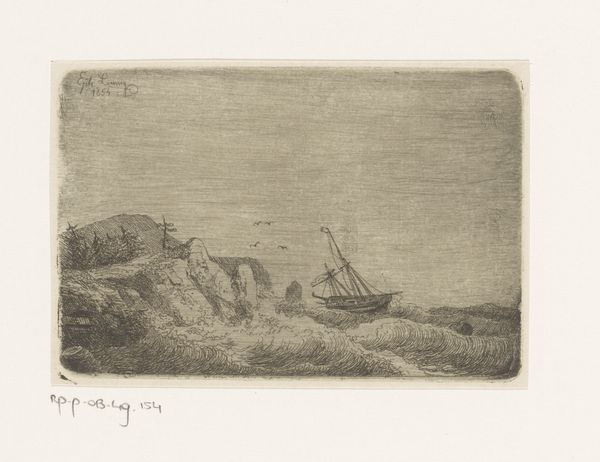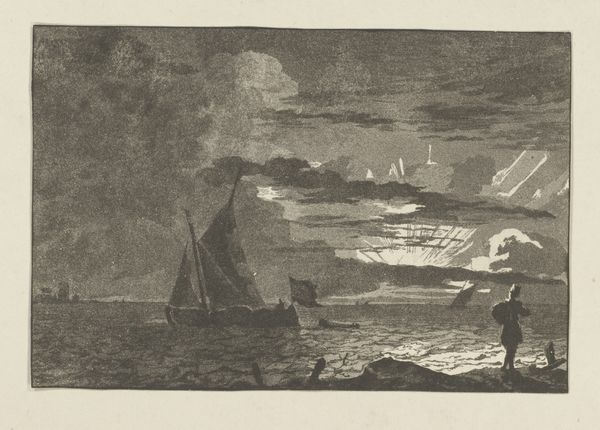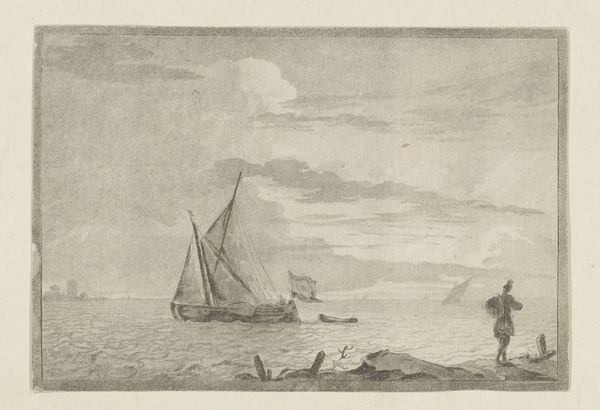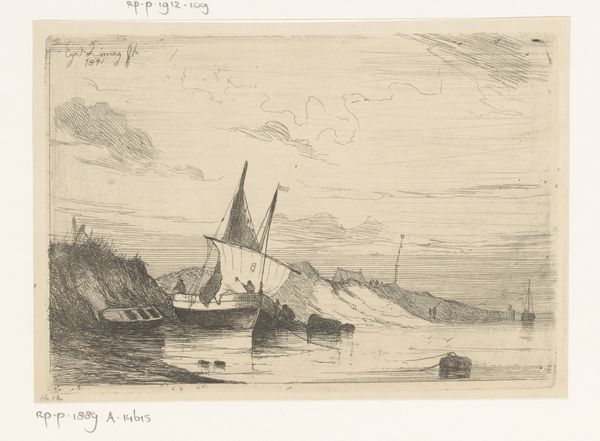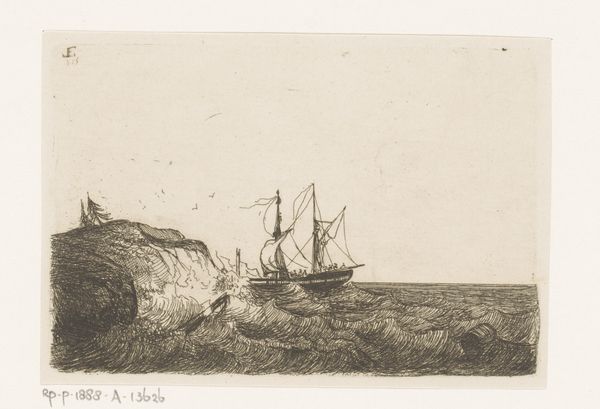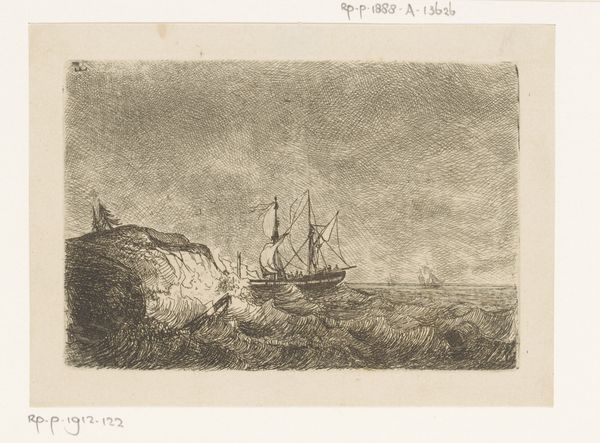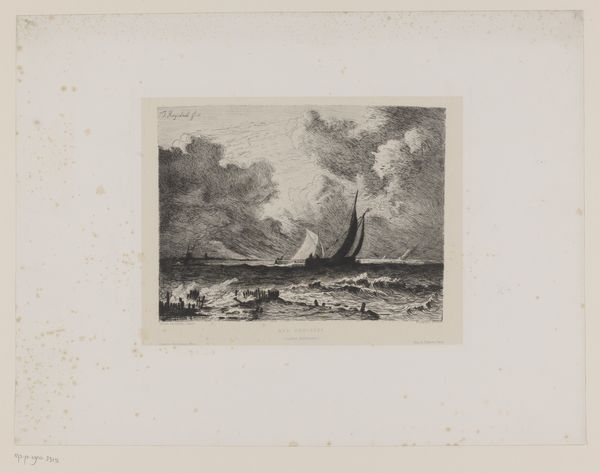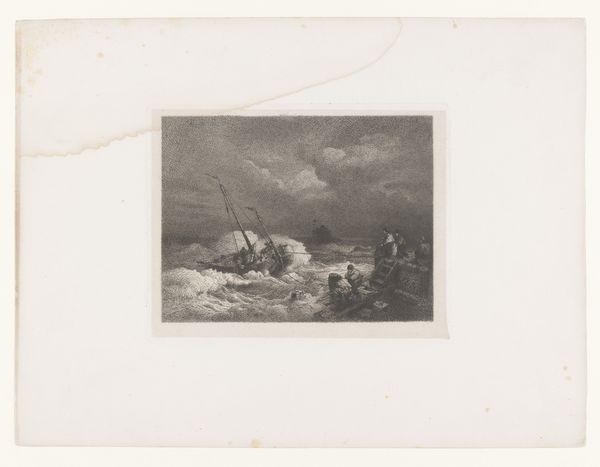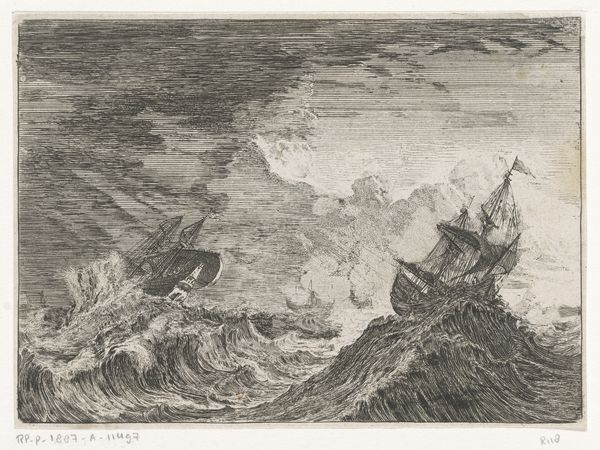
Dimensions: height 85 mm, width 126 mm
Copyright: Rijks Museum: Open Domain
Curator: This etching by Egidius Linnig, titled "Shipwreck at Night", dates back to 1854 and is part of the Rijksmuseum's collection. Editor: There's a definite feeling of drama and unease conjured up. The turbulent sea and that listing ship evoke a real sense of danger. It is a great Romantic work. Curator: Absolutely. Linnig employs etching techniques here. Note how the density of the lines creates depth, particularly in depicting the churning waves and the stormy sky above. The contrasting areas of light and shadow enhance the overall drama, speaking to the socio-economic reality of maritime navigation. The conditions, the reliance on wood...it was a fragile industry. Editor: Yes, and the formal structure mirrors this tension. The diagonal of the ship contrasted against the horizontal lines of the clouds above are perfectly placed. This draws my eye from the darkness to the light, but never relieves the unsettling balance. The linear texture, which results from etching technique, mimics the chaos of the situation. Curator: Etching also allowed for the relatively easy reproduction and dissemination of these images, allowing audiences who perhaps never sailed or even saw the sea to engage with this potentially dangerous, but economically rewarding field. And a very industrial image indeed. Editor: It's interesting to consider how Linnig's handling of the materials themselves contributes to the overall mood. The etching is all about control – the controlled application of acid to create the lines – yet the scene is one of utter chaos and a lack of control, reflecting how the sublime can cause one's mind to bend to the awe of the materials at play. Curator: Indeed. This shipwreck reminds us of the human relationship with nature, and the industrial materials employed to contend with those realities. It all circles back to how labor and resources shaped both art and society at the time. Editor: Yes, the technical mastery alongside the pure emotive effect really makes Linnig's "Shipwreck at Night" so memorable. Curator: A fantastic exploration of both process and impact, wouldn't you agree? Editor: Agreed. A potent example of art history coming to life.
Comments
No comments
Be the first to comment and join the conversation on the ultimate creative platform.
